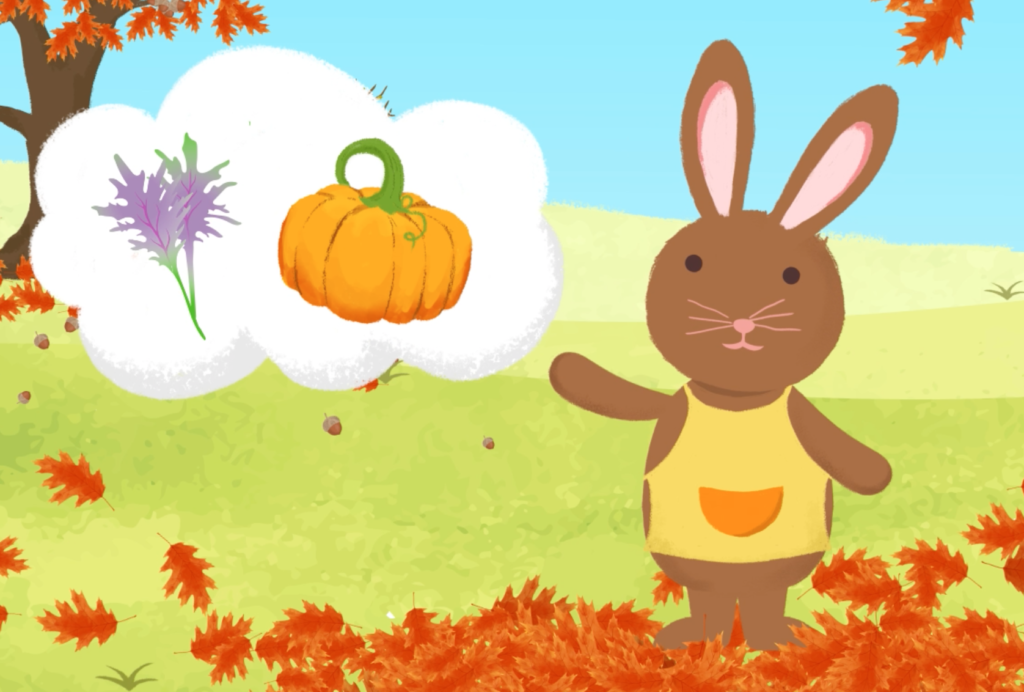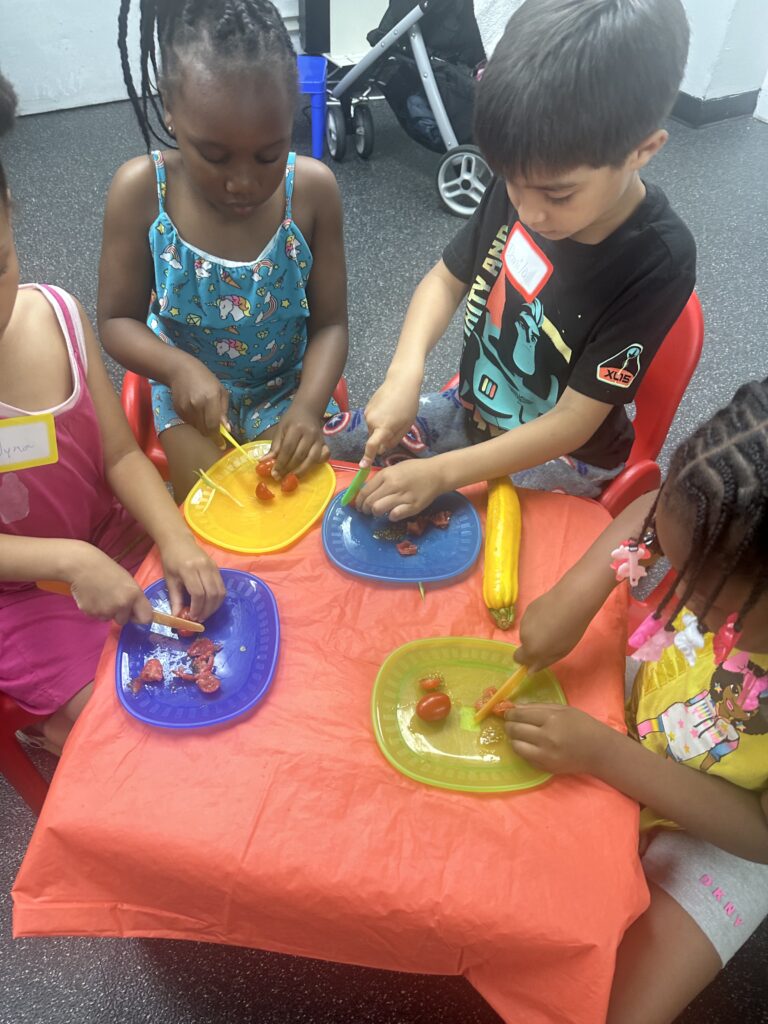In Sync With Nature: How Eating Seasonally Supports Child Nutrition

We live in an environment where child nutrition often takes the back burner in favor of convenience, even when educational programs designed to encourage healthy eating are in place. All too often, these programs are limited to the same narrow range of foods and fail to inspire lasting learning–but it doesn’t have to be that way. Seasonal foods are an underrated and overlooked element that, in partnership with an interactive learning environment, can be the key to increasing nutritional diversity and keeping our kids healthy in the long run.
Nibble with Willow is a play-based program centering seasonal recipes that gives a helping hand in introducing kids to fruits and vegetables they might not encounter or enjoy otherwise. This evidence-based program features Willow the bunny, an appealing character here to make nourishing food a fun adventure instead of a chore.
Why focus on seasonal foods?

Our food system is focused on providing a limited range of foods well outside their normal seasonality. Strawberries, a classic kid-friendly fruit, are only truly in season for a few months each year at different times depending on region–but because they’re grown in so many places and shipped across the country, you can find them in any grocery store any time of year. Because of that, we get into food routines that ignore the bounty of local nature and our kids end up with limited palates that can severely limit their diets.
Eating according to seasonality is more cost-effective, sustainable, and in many cases more nutritious than sticking to the same old rotation of foods. And for kids, it has the additional benefit of facilitating food education that sticks.
Reinforcing nutrition with novelty

Anyone with kids understands the challenges of a picky eater, and many parents don’t have the time or training to stop balanced meals from becoming a battle of wills–let alone introduce new foods without a fight. Nibble with Willow works on the principle that novelty is a key learning tool when used correctly, and seasonal foods are the perfect vehicle for encouraging a wonder-infused approach to eating. While it’s simple enough to steam up some winter squash and serve it up, a child will be much more likely to give it a try if they’ve had the experience of learning all about it with fun facts from a spirited character. Getting a new food to explore that’s somewhat exclusive to each season reinforces how special it is to enjoy each seasonal food to the fullest.
Interactivity as a reinforcer
Every early childhood educator knows that kids who can get their hands dirty in a project are more engaged and experience better learning outcomes. Making seasonal foods an experiment and having children follow along in making their own dish helps introduce new textures and sensations that familiarize kids with new foods before actually trying them. This helps overcome the barrier of being served something and the reaction being immediate rejection. Handing kids agency in the crafting of their new recipes makes trying new things less scary, and more of a celebration of their learning.
Variety as the new normal
Taking kids on a ‘seasonal food adventure’ helps normalize the idea that trying something new is a positive experience rather than one to be resisted. The structured nature of Nibble with Willow’s seasonal program makes it an event to look forward to, with tangible results that build anticipation for the next session. The accompanying seasonal WIllow videos support families to engage with Willow concepts outside the classroom, at home in a playful and delicious way.
Why Nibble with Willow works
At FamilyCook Productions, we’re keenly aware of how and why so many childhood nutrition education efforts fail–and we’re working to get our high-impact program into schools to reach as many children as possible. Nibble with Willow harnesses the power of play with a facilitator who shepherds kids along a learning journey with storytelling through Willow, engagement with finger puppets, and the experience of creating a simple recipe featuring seasonal ingredients. The program helps schools work in tandem with parents to change behaviors and form lifelong healthy eating habits without having to put up a fight. By putting the gift of seasonal foods to use, we can help end the cycle of poor nutrition.
